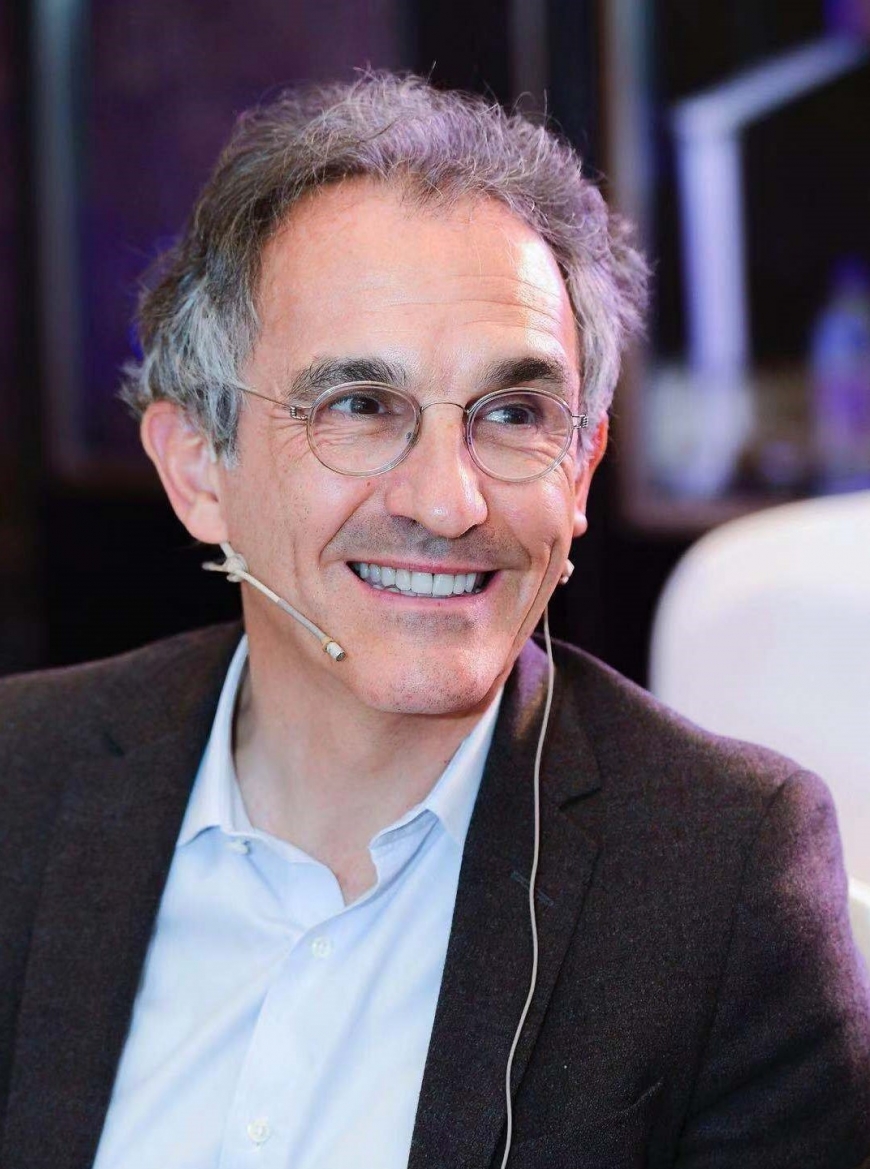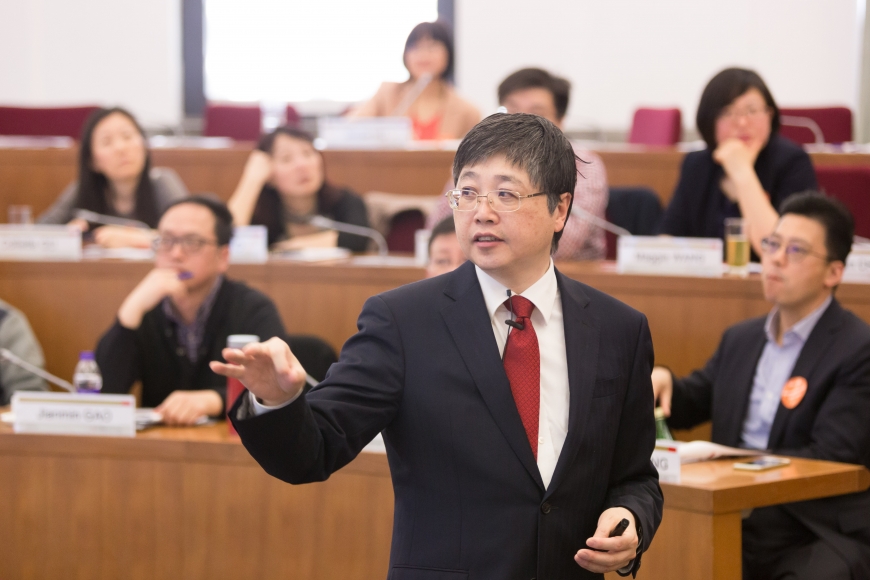Beyond the Headlines: CEIBS Selected as Asian Partner for Mars Catalyst Project



By Charmaine N Clarke
It was announced in April that Catalyst, the corporate think tank of Mars, Incorporated, makers of iconic brands such as M&M’s, Dove chocolate, Snickers, Royal Canin, Wrigley’s and many others, had selected CEIBS as its Asia partner for its new business model innovation initiative, Economics of Mutuality (EoM). This was great news as it is Catalyst’s first partnership with an academic institution in Asia and follows the completion of a 5-year partnership between Catalyst and Oxford University. As part of the agreement, CEIBS will engage in academic research into the practical application of EoM in a Chinese business context. The school will also conduct related case studies, deliver classroom lectures, and host an annual forum.
As CEIBS Vice President and Dean Ding Yuan explained when the announcement was made, “EoM is in line with CEIBS’ goal of educating socially responsible business leaders who seek to go beyond financial success to achieve global significance.”
Since its inception in the 1960s, Mars Catalyst has worked closely with scholars and academic institutions around the world but, according to Bruno Roche, Chief Economist at Mars and Managing Director of Catalyst, they felt the time has come to “move East”, taking the EoM approach to China and the wider Asia. “We selected CEIBS because we need to ensure that we are partnering with the right academic partner that has a shared sense of purpose to transform business for the common good,” says Roche.
But what exactly is EoM and why is this partnership important for CEIBS and Catalyst? Read on for excerpts from interviews with Roche and CEIBS Professor of Economics and Finance and Associate Dean (Research) Xu Bin who is spearheading the project.

Bruno Roche: EoM Explained & Why CEIBS
TheLINK: What is EoM?
EoM is a transformational management innovation that empowers businesses to operate more efficiently at all levels while meaningfully contributing to the individual, societal, and environmental wellbeing of those they impact through their operations, profitably and at scale. The first step is ensuring that the company does not operate only within the boundaries of legal obligations, but takes the strategic decision to put purpose at the centre of its business ecosystems, rather than at the periphery with profit maximization for shareholders at the centre. This means that stakeholders’ ‘pain points’ (needs) must be identified and the ecosystems orchestrated to address the key pain points. Step two is that they also make a strategic decision that the resources they mobilize, manage, and create and/or leverage are not only financial or capital resources but are also human and social, as well as natural capital resources. All these resources have value but, without the right metrics, they are essentially squandered. These are the two prerequisites for EoM to be implemented. So not only are companies more responsible in terms of their impact on society and the environment when they begin to implement EoM, but they also outperform financially, both in terms of top line and bottom line, long and short term, those units that focus only on maximizing financial profit, often at the expense of stakeholders. The third element is that it requires a change of behaviour and also an evolution of company culture whereby the firm makes a strategic decision to bring everything together into a new business model that has mutual profit and a mutual bottom line. Only then can it be said that a company is operating according to the principle of the Economics of Mutuality.
TheLINK: Why partner with CEIBS?
From the outset, with the Economics of Mutuality programme, we at Mars Catalyst have had a strong foundation in the academic world. We have worked with Harvard Business School, the Paris School of Economics, the Sorbonne, and most intensively over the last five years with Oxford’s Said Business School in the UK. So, from the very beginning, the Economics of Mutuality has been developing EoM curricula to infuse the new approach into the minds and hearts of the next generation of business leaders, since learning is often far easier than ‘unlearning.’ And this approach to academic and practical business application has been part of the DNA, if you like, of the EoM programme from the outset.
When we decided to move East, and expand the vision of economic opportunity to China, it was obvious to us that we wanted to connect and partner with academic institutions in China. We looked at Tsinghua and Peking, but we were very intrigued by what CEIBS could offer. There was almost an emotional connection between our team and the CEIBS team of Professors Lydia Price, Peter Moran, and Xu Bin when we first showed up. We gave a speech on EoM and felt there was a lot of receptivity and energy among the faculty and students. There was an emotional connection, a human connection, between my team at Mars Catalyst and the CEIBS team.
But one element that was critically important is the way in which CEIBS is organised. It has a very interesting story, being a joint venture between the Chinese government and the European Commission. It’s almost like a bridge between the West and the East, and we felt CEIBS could really be a bridge to connect the Western culture, where many of us come from, and the Chinese culture, where CEIBS is very present.
The third element was the fact that CEIBS, being a business school, is very focused on practical implementation. When you speak with the professors, you see that they are really interested in the business application behind the theories. This is critically important. At Catalyst we also have a passion for implementation; we are staffed mostly by PhDs who often co-author academic publications with academic partners but are also deeply grounded in business needs. If an idea is not being implemented, for us, it's a bit useless. So we always like to ensure that there is a dialogue between ideas and practice, between the theory and practical implementation — and implementation, after all, is our job.
And, finally, CEIBS has a very impressive and extensive alumni network. Our vision is to extend the Economics of Mutuality beyond Mars, and also beyond Oxford. We need to ensure that we are partnering with the right academic partner with rich academic research and education purposes, of course. But also, by partnering with CEIBS, we hope that this will also open EoM to a network of high-powered alumni to speed up the spreading of Economics of Mutuality in businesses in Asia, and particularly in China.
TheLINK: I understand that there are three components to this partnership: academic research, basic academic education and engaging the school’s alumni network. Can you provide some more details about how it will work?
On the research side, there will be publications, books, and case studies. On the education side, we expect that, over time, the Economics of Mutuality principle and model will be diffused among students in the form of electives in the MBA programme. We expect also to organize an annual China forum.
CEIBS would gain a lot in terms of positioning itself as leading the discourse, promoting the new growth model of the 21st century. And in return, also continue to nurture, enrich, and develop this new economic model and management innovation. That's what we expect to develop together with CEIBS.
Our vision is to organise a coalition of business schools around the world with a bridgehead in each continent. We hope that CEIBS will be that bridgehead, that head of the network, for not only China but also for Asia. Over the years, we have worked with individual scholars from different universities in China, but this is the first time that we will have an institutional-level partnership with Chinese academicians.
Prof Xu Bin: CEIBS’ View of the Partnership
TheLINK: Why did CEIBS accept Mars Catalyst’s invitation to partner on the EoM initiative?

When Bruno and his team came to visit us about two years ago, the timing was perfect because that was the time when CEIBS was thinking about elevating the CSR concept to a very high strategic level. As it says in our mission statement, CEIBS is educating responsible leaders versed in China depth and global breadth. So our mission has three pillars: China Depth, Global Breadth (the school’s tagline) and social responsibility. And so it was very natural that with — at that time — 20-plus years of CEIBS’ development, we had reached a point where we wanted to emphasize this. Interestingly, it was also at that time that the CEIBS Alumni Association elected Tian Ming as the new President. He is the CEO of Landsea, a growing real estate company in Nanjing. The association’s leadership team reached a consensus to place CSR at the centre of CEIBS alumni activities, in particular making CSR the theme of their annual conference each year.
I was also involved in that discussion at the leadership level with the alumni. So I immediately thought that this relationship with Mars could be part of the school’s wider strategy. And I think without this sort of strategic importance, we would not have pushed that hard to go ahead with the relationship with Mars.
TheLINK: In addition to the annual forum, there is a strong academic element to this collaboration. Can you provide some details?
For now, we have agreed that three professors will do research projects: Professor of Marketing Lydia Price, Associate Professor of Strategy Peter Moran and Assistant Professor of Management Byron Lee. Lydia will explore the concept of economic mutuality in China. Peter and Byron are teaching ethics courses for MBAs, so they can inject some of these concepts into their classes. These are just a few examples to start. But I think one of the most valuable aspects, for Catalyst, is to work with our alumni, business executives. Mars Catalyst has a concept and, actually, they could go to Africa to do it. But if it can be successfully done in, say, one or two Chinese companies, that adds a lot of credibility to their approach.
For more about EoM visit https://economicsofmutuality.com/















